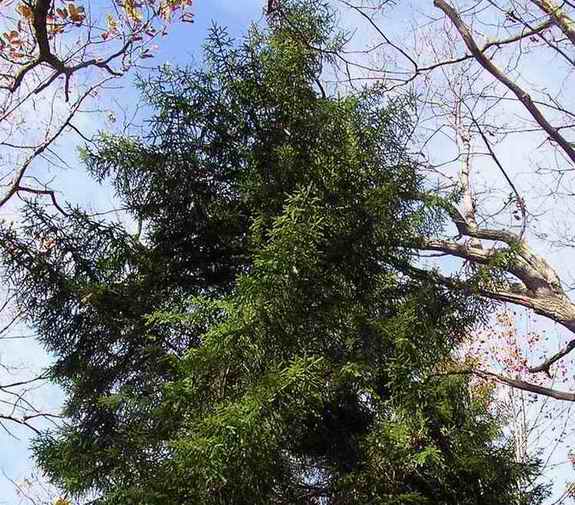|
Common Name: Eastern Hemlock, Canada Hemlock, Tan-bark Tree, Hemlock Spruce (the etymological root of hemlock is Old English hymlic, no known Latin source), Spruce Pine Scientific Name: Tsuga canadensis (Tsuga is the Japanese name for an Asian hemlock)
Potpourri: Eastern hemlock is the most shade tolerant of all tree species. Hemlocks endure for up to 100 years as small saplings in the shade of mature trees until a break in the canopy allows for growth. Hemlocks rarely germinate in open areas, needing the shade of the larger trees to provide the requisite moist habitat. Thus, natural stands of hemlocks consist of a number of large, older trees that provide shelter for the seedlings. Hemlocks grow very slowly, with a Methuselah-like longevity of over 900 years.
Hemlock dominated watersheds support up to 37 percent more species diversity than comparable mixed hardwood forests. Several species of warblers and vireos use hemlock almost exclusively and the chickadees, which have about a 50 percent mortality rate in winter, use them for shelter during storms. Hemlock stands are essential for bedding of white tailed deer and as their seventh most important winter food source.
Native Americans used the bark of the hemlock, which has a high concentration of tannic acid, to make a tea that was used to treat coughs and to apply to cuts and wounds. The early settlers used it as a source of lumber and tannin, an industry that peaked between 1890 and 1910. Hundreds of leather tanneries were established in Eastern Canada and New England. Over the last several decades, the woolly adelgid, an insect pest from Asia, has decimated the hemlock stands of the southern Appalachians. |
